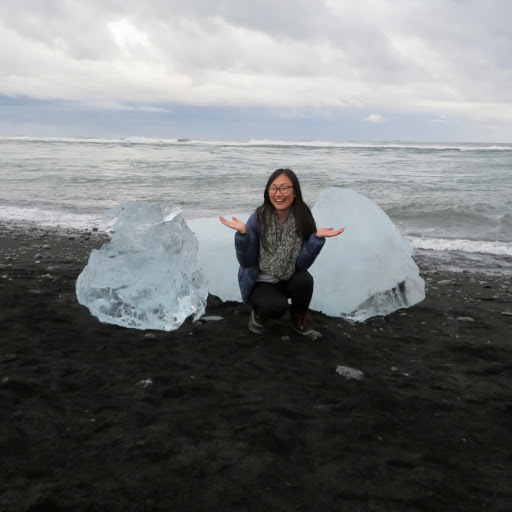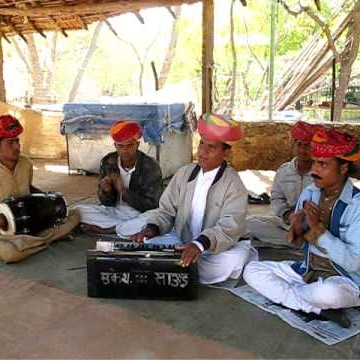Yin J Wang
age ~96
from Saratoga, CA
- Also known as:
-
- Yin Jie Wang
- Yin Mei Huei Wang
- Yin Mei-Huei Wang
- Yinjie J Wang
- Yim J Wang
- Yinjie J Wangyin
- Jie Wang Yin
- Yin J Lang
- Phone and address:
-
19291 De Havilland Dr, Saratoga, CA 95070
408 863-0436
Yin Wang Phones & Addresses
- 19291 De Havilland Dr, Saratoga, CA 95070 • 408 863-0436
- 12412 Crayside Ln, Saratoga, CA 95070
- 12601 Cambridge Dr, Saratoga, CA 95070
- 13135 Via Arriba Ct, Saratoga, CA 95070 • 408 741-8850
- Cupertino, CA
- San Jose, CA
Medicine Doctors

Dr. Yin H Wang, San Jose CA - DDS (Doctor of Dental Surgery)
view sourceSpecialties:
Dentistry
Address:
2593 S King Rd Suite 1, San Jose, CA 95122
408 274-4426 (Phone), 408 274-4438 (Fax)
408 274-4426 (Phone), 408 274-4438 (Fax)
Languages:
English
Lawyers & Attorneys

Yin Wang - Lawyer
view sourceLicenses:
New York - Currently registered 2002
Education:
The University of Chicago

Yin Wang - Lawyer
view sourceSpecialties:
General Corporate
Mergers and Acquisitions
General Employment Advice
Non-Contentious Insurance Advice
Cross Border Counseling
Corporate Compliance
Mergers and Acquisitions
General Employment Advice
Non-Contentious Insurance Advice
Cross Border Counseling
Corporate Compliance
ISLN:
917376151
Admitted:
1995
Name / Title
Company / Classification
Phones & Addresses
Director, President
Weikang Bio-Technology Group Company, Inc
Principal
Yin Hui Wang, D.D.S., Inc
Dentist's Office
Dentist's Office
15790 Blossom Hl Rd, Los Gatos, CA 95032
Yin Wang DDS
Dentists
Dentists
2593 S King Rd, San Jose, CA 95122
408 274-4426
408 274-4426
SPRING CARPET INC
Owner
Tully & King Complete Family Dental Care
Dentist's Office
Dentist's Office
2593 S King Rd, San Jose, CA 95122
408 223-6336
408 223-6336
President
WEST L.A. MEDICAL MANAGEMENT INC
Wendy Sun Cpa, Santa Clara, CA 95054
3140 De Ln Cruz Blvd, Santa Clara, CA 95054
3140 De Ln Cruz Blvd, Santa Clara, CA 95054
Resumes

Software Engineer At Bloomberg
view sourcePosition:
Software Engineer at Bloomberg
Location:
New York, New York
Industry:
Financial Services
Work:
Bloomberg since Feb 2011
Software Engineer
Salesforce.com Jun 2010 - Aug 2010
Software Developement Engineer Intern
Daimler Jan 2009 - Jun 2009
Intern
Software Engineer
Salesforce.com Jun 2010 - Aug 2010
Software Developement Engineer Intern
Daimler Jan 2009 - Jun 2009
Intern
Education:
Carnegie Mellon University 2009 - 2010

Programming Languages Researcher
view sourceLocation:
San Francisco, California
Industry:
Computer Software
Work:
Coverity Dec 2012 - Jun 2013
Software Engineer
Google May 2010 - Aug 2010
Software Engineer Intern
Google May 2009 - Aug 2009
Software Engineer Intern
UOneNet - Beijing City, China Feb 2006 - Aug 2006
Software Engineer
Software Engineer
Google May 2010 - Aug 2010
Software Engineer Intern
Google May 2009 - Aug 2009
Software Engineer Intern
UOneNet - Beijing City, China Feb 2006 - Aug 2006
Software Engineer
Education:
Indiana University Bloomington 2012
Master of Science (M.S.), Computer Science Cornell University 2008
Master of Science (M.S.), Computer Science Tsinghua University 2001 - 2005
Sichuan University 1997 - 2001
B.E., Computer Science and Technology
Master of Science (M.S.), Computer Science Cornell University 2008
Master of Science (M.S.), Computer Science Tsinghua University 2001 - 2005
Sichuan University 1997 - 2001
B.E., Computer Science and Technology
Skills:
Algorithms
Compilers
Type Systems
Static Analysis
Logic Programming
Functional Programming
Scheme
Java
C++
Computer Science
Lambda Calculus
Programming Language Semantics
Type Theory
Common Lisp
C
Haskell
Matlab
Linux
Coq
Assembly
Mathematica
JavaScript
Racket
Compilers
Type Systems
Static Analysis
Logic Programming
Functional Programming
Scheme
Java
C++
Computer Science
Lambda Calculus
Programming Language Semantics
Type Theory
Common Lisp
C
Haskell
Matlab
Linux
Coq
Assembly
Mathematica
JavaScript
Racket
Interests:
programming, thinking, blogging, traveling
Languages:
English
Mandarin
French
Mandarin
French
Awards:
Best Paper Award
ASP-DAC
Fellowship
Indiana University
declined
ASP-DAC
Fellowship
Indiana University
declined

R&D Manager At Ericsson
view sourceLocation:
Shanghai City, China
Industry:
Telecommunications
Skills:
GSM
3G
LTE
Telecommunications
UMTS
WCDMA
IP
Wireless
GPRS
Mobile Communications
2G
SS7
CDMA
BSS
SDH
Mobile Devices
RF
SIP
Open Source Software
Core Network
3G
LTE
Telecommunications
UMTS
WCDMA
IP
Wireless
GPRS
Mobile Communications
2G
SS7
CDMA
BSS
SDH
Mobile Devices
RF
SIP
Open Source Software
Core Network
Languages:
English
Chinese
Chinese

Yin Wah Wang
view sourceWork:
Hamilton Madison House 2008 - 2012
Family Assiant
Family Assiant

Display Touch And Lamination Tpm Manager
view sourceLocation:
Cupertino, CA
Industry:
Consumer Electronics
Work:
Apple
Display Touch and Lamination Tpm Manager
Apple 2009 - 2013
Touch and Lamination Process Engineering Manager
Apple 2007 - 2009
Touch and Lamination Process Engineer
Intel Corporation 2004 - 2007
Npi and Assembly Process Engineering Manager
Intel Corporation Aug 2000 - Jan 2003
Assembly Process Engineer
Display Touch and Lamination Tpm Manager
Apple 2009 - 2013
Touch and Lamination Process Engineering Manager
Apple 2007 - 2009
Touch and Lamination Process Engineer
Intel Corporation 2004 - 2007
Npi and Assembly Process Engineering Manager
Intel Corporation Aug 2000 - Jan 2003
Assembly Process Engineer
Education:
University of Technology Sydney 1997 - 2000
Masters, Master of Engineering, Engineering, Mechanical Engineering Shanghai Jiao Tong University 1992 - 1996
Bachelors, Mechanical Engineering
Masters, Master of Engineering, Engineering, Mechanical Engineering Shanghai Jiao Tong University 1992 - 1996
Bachelors, Mechanical Engineering
Skills:
Manufacturing
Product Development
Engineering
Process Engineering
Cross Functional Team Leadership
Engineering Management
Six Sigma
Product Development
Engineering
Process Engineering
Cross Functional Team Leadership
Engineering Management
Six Sigma

Yin Wang
view source
Yin Wang
view sourceLocation:
United States

Yin Wang
view sourceLocation:
United States
Us Patents
-
Middleware For Extracting Aggregation Statistics To Enable Light-Weight Management Planners
view source -
US Patent:20110126219, May 26, 2011
-
Filed:Nov 20, 2009
-
Appl. No.:12/622737
-
Inventors:Aameek Singh - University Place, IN
Sandeep M. Uttamchandani - San Jose CA, US
Yin Wang - Ann Arbor MI, US -
Assignee:INTERNATIONAL BUSINESS MACHINES CORPORATION - Armonk NY
-
International Classification:G06F 9/46
-
US Classification:719328
-
Abstract:Management of a planner through use of a middleware layer. A computer system is configured with the middleware layer in communication with both a planner and a data repository. One or more modules are provided in the middleware layer to support the functionality of the planner. Application program interface calls are employed to call the modules, thereby mitigating duplication of the functionality in separate planners.
-
Composition Of Services
view source -
US Patent:20130007242, Jan 3, 2013
-
Filed:Jul 1, 2011
-
Appl. No.:13/175211
-
Inventors:Yin Wang - Sunnyvale CA, US
Hamid Reza Motahari Nezhad - Los Altos CA, US
Ram Swaminathan - Cupertino CA, US
Sharad Singhal - Belmont CA, US -
International Classification:G06F 15/16
-
US Classification:709223
-
Abstract:A method of generating a set of composite services is provided herein. The method includes receiving standardized service descriptions of a set of component services from service providers. The standardized description of a component service may be translated to an automaton-based description. A specified goal associated with the set of component services may be received. The set of composite services may be generated based on the automaton-based description and the specified goal. Each of the generated composite services may accomplish the specified goal.
-
Providing Goods Or Services
view source -
US Patent:20130111430, May 2, 2013
-
Filed:Oct 27, 2011
-
Appl. No.:13/282632
-
Inventors:Yin Wang - Palo Alto CA, US
Ahmed M. Nazeem - Atlanta GA, US
Ram Swaminathan - Cupertino CA, US -
International Classification:G06F 9/44
-
US Classification:717104
-
Abstract:An exemplary embodiment of the present may provide goods or services by selecting component services, and computing an automaton from the component services. A Petri net may be generated from the automaton using a theory of regions, and the Petri net may be executed to optimize the provision of goods or services.
-
Identifying Impact Of A Traffic Incident On A Road Network
view source -
US Patent:20130289864, Oct 31, 2013
-
Filed:Apr 30, 2012
-
Appl. No.:13/460203
-
Inventors:Mahalia Katherine MILLER - Palo Alto CA, US
Chetan Kumar Gupta - San Mateo CA, US
Yin Wang - Sunnyvale CA, US -
International Classification:G06G 7/76
-
US Classification:701119
-
Abstract:A method and system for identifying impact of a traffic incident on a road network, wherein the impact may be measured in terms of a spatial-temporal-impact region, in terms of incident duration from the time the incident is reported to the time at which the affected road network returns to recurrent flow conditions, and in terms of a cumulative time delay of all affected drivers.
-
Electric Vehicle Induction Machine
view source -
US Patent:20200336055, Oct 22, 2020
-
Filed:Apr 16, 2019
-
Appl. No.:16/385992
-
Inventors:- Santa Clara CA, US
Zhichun Ma - Santa Clara CA, US
Duanyang Wang - Santa Clara CA, US
Yifan Tang - Santa Clara CA, US
Yin Wang - Santa Clara CA, US -
International Classification:H02K 17/16
H02K 15/00
H02K 7/00
B60L 50/51
B22D 13/02
B22D 19/00 -
Abstract:Provided herein are systems, apparatuses, and methods of providing a centrifugally cast rotor assembly for an induction motor of an electric vehicle. The rotor assembly includes a rotor lamination stack with a cylindrical shape that terminates in a first end surface and a second end surface. The rotor lamination stack has multiple lamination discs, and each lamination disc has multiple rotor slots. The rotor assembly further includes copper bars disposed within the rotor slots, a first intermediary end ring disposed at the first end surface, and a second intermediary end ring disposed at the second end surface. A centrifugally cast first copper end ring that electrically and mechanically couples each of the copper bars is located proximate the first end surface, and a centrifugally cast second copper end ring that electrically and mechanically couples each of the copper bars is located proximate the second end surface.
-
Electric Vehicle Induction Machine
view source -
US Patent:20200336056, Oct 22, 2020
-
Filed:Apr 18, 2019
-
Appl. No.:16/388515
-
Inventors:- Santa Clara CA, US
Zhichun Ma - Santa Clara CA, US
Duanyang Wang - Santa Clara CA, US
Yifan Tang - Santa Clara CA, US
Yin Wang - Santa Clara CA, US -
International Classification:H02K 17/16
B60L 50/51
B22D 19/00
H02K 15/00
B22D 13/02
H02K 7/00 -
Abstract:Provided herein are systems, apparatuses, and methods of providing a centrifugally cast rotor assembly for an induction motor of an electric vehicle. The rotor assembly includes a rotor lamination stack with a cylindrical shape that terminates in a first end surface and a second end surface. The rotor lamination stack has multiple lamination discs, and each lamination disc has multiple rotor slots. The rotor assembly further includes copper bars disposed within the rotor slots, a first intermediary end ring disposed at the first end surface, and a second intermediary end ring disposed at the second end surface. A centrifugally cast first copper end ring that electrically and mechanically couples each of the copper bars is located proximate the first end surface, and a centrifugally cast second copper end ring that electrically and mechanically couples each of the copper bars is located proximate the second end surface.
-
Systems And Methods For Providing Quantitative Evaluation Of Map Quality
view source -
US Patent:20170140218, May 18, 2017
-
Filed:Nov 16, 2015
-
Appl. No.:14/942811
-
Inventors:- Menlo Park CA, US
Yin Wang - Redwood City CA, US -
International Classification:G06K 9/00
G06K 9/52
G06F 17/30
G06K 9/46
G06T 7/40
G06K 9/62
G06T 7/60 -
Abstract:Systems, methods, and non-transitory computer-readable media can acquire a first map that represents a particular geographical region. The first map can be associated with an image map. A first vector map can be generated based on the image map with which the first map is associated. A second map that represents the particular geographical region can be acquired. The second map can be different from the first map and can be associated with a second vector map. One or more quantitative evaluations for at least one of the first map or the second map can be provided based on the first vector map and the second vector map.
Myspace
Googleplus

Yin Wang
Work:
Leiden University - PhD
Education:
Leiden University - Biology
Tagline:
Be myself

Yin Wang
Education:
Manhattan College - Psychology

Yin Wang
Work:
Negest

Yin Wang

Yin Wang

Yin Wang

Yin Wang

Yin Wang
Flickr

Yin Yin Wang
view source
Yin Yin Wang
view source
Yin Wang
view source
Yin Wang
view source
Yin Wang
view source
Yin Wang
view source
Yin Miki Wang
view source
Yin Ying Wang
view sourceYoutube
Get Report for Yin J Wang from Saratoga, CA, age ~96














![Being Human [1/1] Being Human [1/1]](https://i.ytimg.com/vi/GIhfs-zUNLE/0.jpg)